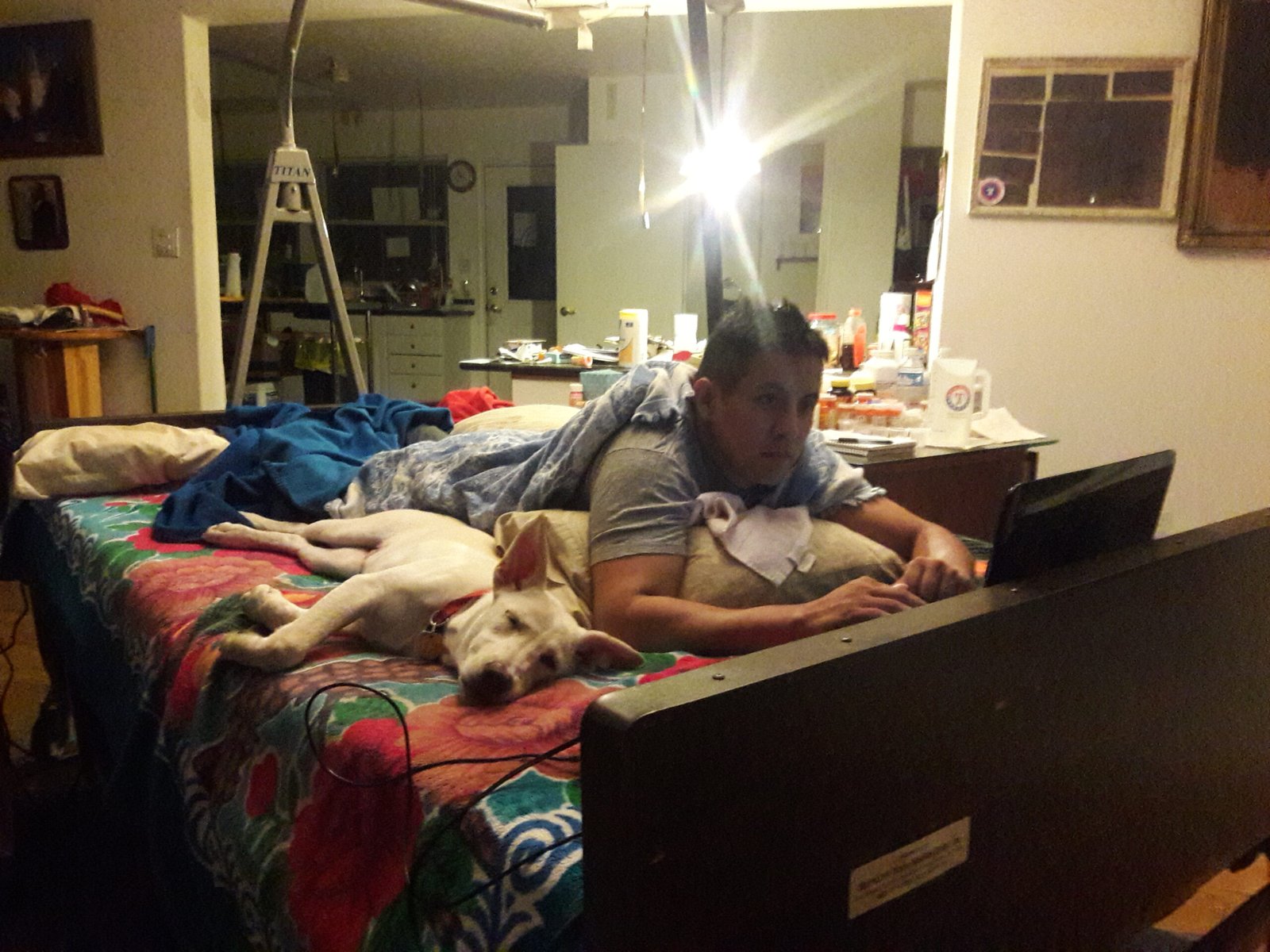Have you ever woken up nose-to-nose with a wagging tail, feeling a little paw pressed against your cheek? For many dog lovers, sharing a bed with their furry companion is the ultimate sign of love and connection. Yet, the question lingers: is letting your dog sleep in your bed every night a cozy dream or a recipe for restless nights? Let’s dig into the surprising realities, heartfelt moments, and potential challenges that come with inviting your loyal friend under the covers.
The Emotional Bond Deepens Overnight
Allowing your dog to sleep in your bed can strengthen the unique bond you share. Dogs are pack animals by nature, and being close to their humans at night gives them a deep sense of belonging and safety. Many pet owners report feeling more connected and comforted when their dog is curled up beside them. After a long, stressful day, the presence of a loving companion can be soothing—like having a living, breathing teddy bear. This closeness can even help reduce feelings of loneliness and anxiety, both for you and your pup. The warmth of their body, the gentle sound of their breathing—it’s all a reminder that you’re never truly alone. For some, these nightly cuddles become the highlight of their day, building trust and affection in ways that daytime activities sometimes can’t match.
How Your Sleep Quality May Change
While the emotional perks are undeniable, sharing your bed with a dog can impact your sleep in unexpected ways. Dogs, just like people, have their own night-time habits. You might wake up to the sound of scratching, shifting, or the occasional dream-induced twitching. Some dogs snore, hog the blankets, or insist on sleeping sideways, taking up more than their fair share of the bed. Light sleepers may find themselves waking up several times each night, leading to grogginess and irritability during the day. On the flip side, some people find the rhythmic breathing and gentle weight of their dog actually helps them fall asleep faster and stay asleep longer. Everyone’s experience is unique, and it often depends on your dog’s temperament and your own sleep style.
Potential Health and Allergy Concerns

Letting your dog snuggle up in bed isn’t always as harmless as it feels. Dogs carry dander, pollen, and sometimes even fleas or ticks in their fur, which can trigger allergies or worsen asthma symptoms for sensitive owners. If you find yourself sneezing or waking up congested, your pet’s presence might be the culprit. Additionally, dogs sometimes track in dirt or germs from outside, which can land on your pillows and sheets. While most healthy adults aren’t at significant risk, those with compromised immune systems should be a bit more cautious. Regular grooming, washing your bedding frequently, and keeping up with flea prevention can help minimize these risks.
Behavioral Effects on Your Dog
Sleeping with your dog can have a noticeable effect on their behavior. For some pups, being allowed on the bed reinforces their sense of security and contentment. But for others, it may lead to possessiveness or resource guarding, especially if they start to view the bed as “theirs.” This can make it challenging to set boundaries later on, particularly if you want to reclaim your bed or bring a new pet or family member into the mix. On the positive side, dogs that are anxious or have separation issues often benefit from this nightly closeness, feeling reassured and less likely to act out during the day. The key is consistency—if you decide to allow your dog on the bed, try to stick with your routine to avoid confusing your furry friend.
Impact on Relationships with Partners
Adding a dog to your bed can sometimes create tension between couples. Not everyone shares the same level of enthusiasm for dog hair on the sheets or being woken up by a cold nose. Some partners might feel left out or pushed to the edge of the mattress, which can impact intimacy and communication. It’s important to have honest conversations about everyone’s comfort levels and set boundaries that work for the whole household. In some cases, people find creative solutions—like setting up a cozy dog bed next to the human bed, or designating certain nights for canine cuddles. Balancing the needs of both your partner and your pet can help ensure that everyone feels loved and included.
Possible Influence on Your Dog’s Independence

Dogs that sleep in their owner’s bed every night may become overly dependent. If your pup can’t fall asleep unless they’re next to you, they might struggle with being alone, even for short periods. This can lead to separation anxiety, barking, or destructive behavior when you leave the house. On the other hand, some dogs are naturally independent and can happily snooze anywhere, even if they’re allowed in the bed. If you notice signs of clinginess or distress when you’re apart, it might be worth encouraging your dog to sleep in their own space occasionally. Like children, dogs benefit from learning to be comfortable both with you and on their own.
Temperature and Comfort Considerations

Dogs are like little furnaces, and sharing a bed with one can make for a toasty night—sometimes too toasty. In warmer months, you might find yourself overheating, especially if your dog is a large breed or likes to cuddle close. Conversely, in cold weather, their body heat can be a welcome bonus. Some people find the extra warmth comforting, while others toss and turn trying to escape a sweaty tangle of fur and limbs. It’s important to pay attention to how you and your dog are sleeping. If you’re both comfortable, great! If not, consider adjusting the blankets, opening a window, or giving your pup a designated spot at the foot of the bed.
Training Challenges and Consistency

Once you let your dog sleep in your bed, it can be tough to change the rules. Dogs thrive on routine, and sudden changes—like deciding your dog needs to sleep elsewhere—can leave them confused and anxious. If you travel or stay somewhere dogs aren’t allowed on the bed, your pup might have trouble settling down. Consistency is key to good behavior, so think carefully before inviting your dog under the covers for the first time. If you do need to change the sleeping arrangement, introduce the new routine gradually, using treats and praise to make your dog’s own bed feel special and safe.
The Joy of Waking Up Together

There’s something undeniably joyful about waking up to a wagging tail and a goofy, sleepy face. Dogs have a way of making even the groggiest mornings a little brighter. For many owners, those first moments of the day—filled with happy licks and tail wags—are worth any nighttime inconvenience. The bond you share during these quiet, early hours can set a positive tone for the whole day. If you’re someone who struggles to get out of bed, your dog’s enthusiasm for breakfast or a morning walk can be the perfect motivation. These shared moments build memories and deepen the connection that makes having a dog so special.
Tips for Making Bedtime Safe and Enjoyable
If you decide to let your dog sleep in your bed, a few simple steps can make the experience better for both of you. Keep your dog’s nails trimmed to prevent accidental scratches. Wash your sheets and your dog’s bedding regularly to keep things fresh and clean. Be sure your dog is up-to-date on flea and tick prevention, and clean their paws after they’ve been outside. If your dog tends to hog space, consider using a pet blanket to mark their spot. Pay attention to both your comfort and your dog’s—if either of you isn’t getting a good night’s rest, it might be time to rethink the arrangement. A happy, healthy bedtime routine can help everyone wake up refreshed and ready to start the day.
Letting your dog sleep in your bed every night is a personal choice filled with both heartwarming moments and potential challenges. What would you choose for your canine companion?

Born and bred in South Africa, a Capetonian at heart. Amy-Leigh’s love for nature and animals was inherited from her Dad. He loves taking the family on road trips to experience nature at its finest; Amy-Leigh’s favourite being whale watching in Hermanus and spotting Kudu along the West Coast. Amy-Leigh holds a BA in English Literature and Communication Studies.






